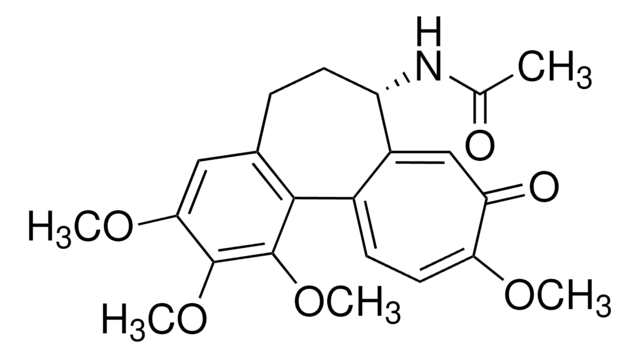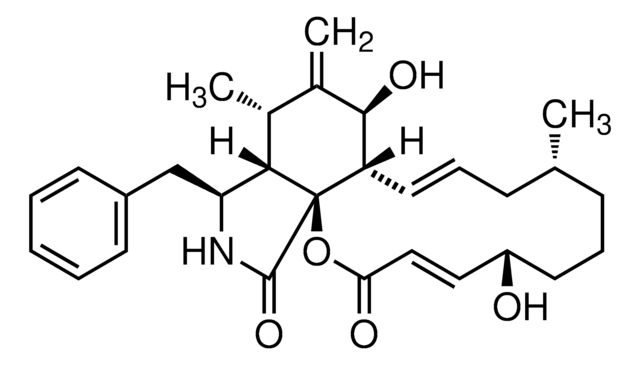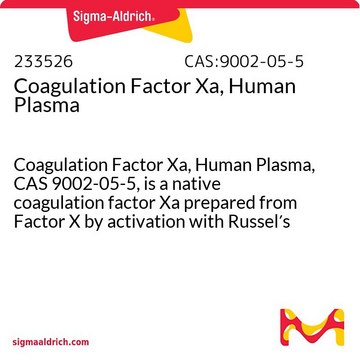234115
Colchicine, Colchicum autumnale
Colchicine, Colchicum autumnale, CAS 64-86-8, is an inhibitor of mitosis that disrupts microtubules and inhibits tubulin polymerization. Induces apoptosis in PC12 and cerebellar granule cells.
Sinônimo(s):
Colchicine, Colchicum autumnale
About This Item
Produtos recomendados
Nível de qualidade
Ensaio
≥94% (HPLC)
forma
powder
fabricante/nome comercial
Calbiochem®
condição de armazenamento
OK to freeze
protect from light
cor
yellow to off-white
solubilidade
ethanol: 10 mg/mL
water: soluble
Condições de expedição
ambient
temperatura de armazenamento
10-30°C
InChI
1S/C22H25NO6/c1-12(24)23-16-8-6-13-10-19(27-3)21(28-4)22(29-5)20(13)14-7-9-18(26-2)17(25)11-15(14)16/h7,9-11,16H,6,8H2,1-5H3,(H,23,24)/t16-/m0/s1
chave InChI
IAKHMKGGTNLKSZ-INIZCTEOSA-N
Descrição geral
Ações bioquímicas/fisiológicas
Inhibitor of mitosis
Advertência
Outras notas
Lindenboim, L., et al. 1995. J. Neurochem.64, 1054.
Leung, M.F., and Sartorelli, A.C. 1992. Leuk. Res.16, 929.
Santell, L. 1992. Exp. Cell Res. 201, 358.
Salmon, E.D., et al. 1984. J. Cell Biol.99, 1066.
Informações legais
Palavra indicadora
Danger
Frases de perigo
Declarações de precaução
Classificações de perigo
Acute Tox. 2 Oral - Muta. 1B
Código de classe de armazenamento
6.1A - Combustible acute toxic Cat. 1 and 2 / very toxic hazardous materials
Classe de risco de água (WGK)
WGK 3
Ponto de fulgor (°F)
Not applicable
Ponto de fulgor (°C)
Not applicable
Certificados de análise (COA)
Busque Certificados de análise (COA) digitando o Número do Lote do produto. Os números de lote e remessa podem ser encontrados no rótulo de um produto após a palavra “Lot” ou “Batch”.
Já possui este produto?
Encontre a documentação dos produtos que você adquiriu recentemente na biblioteca de documentos.
Os clientes também visualizaram
Nossa equipe de cientistas tem experiência em todas as áreas de pesquisa, incluindo Life Sciences, ciência de materiais, síntese química, cromatografia, química analítica e muitas outras.
Entre em contato com a assistência técnica







